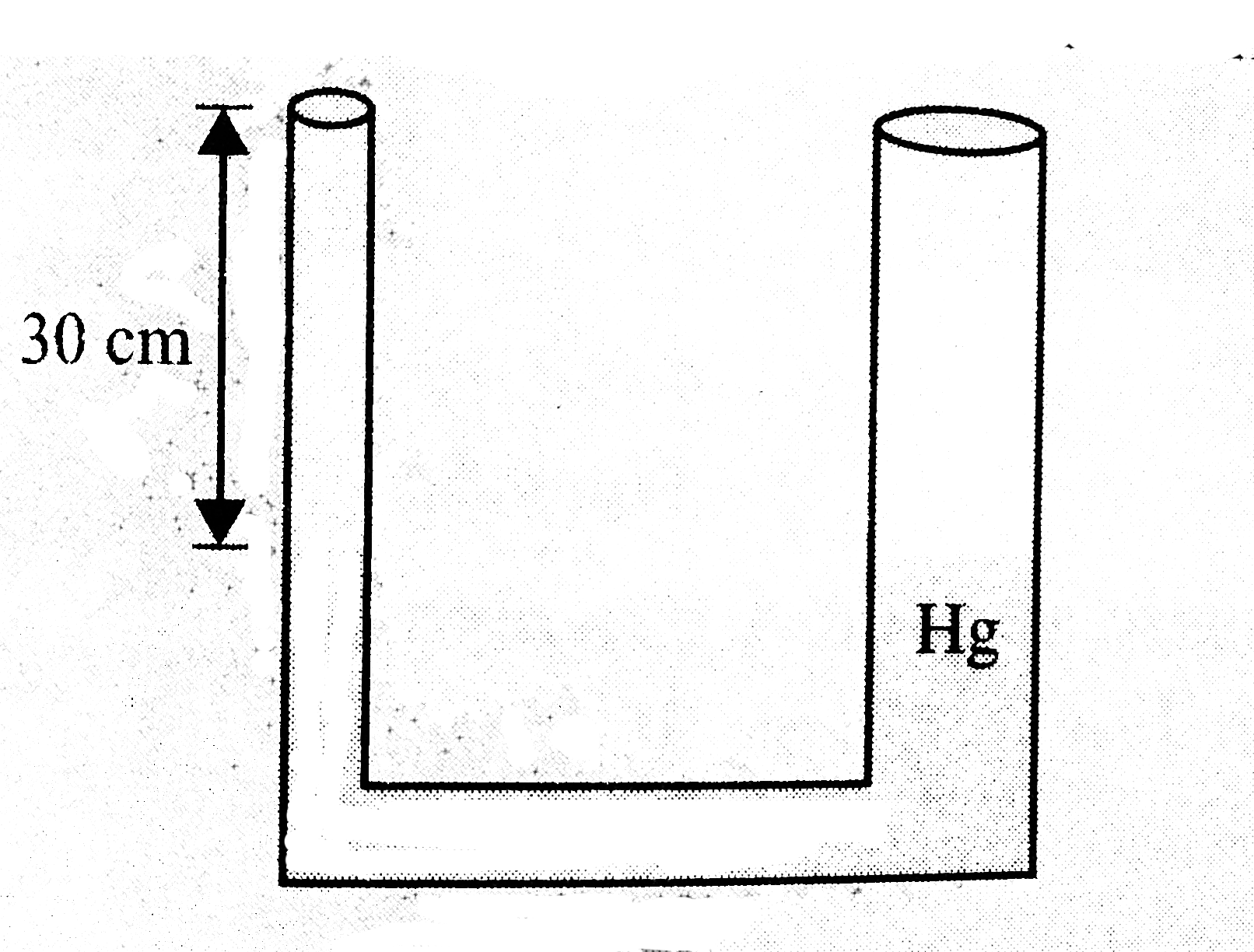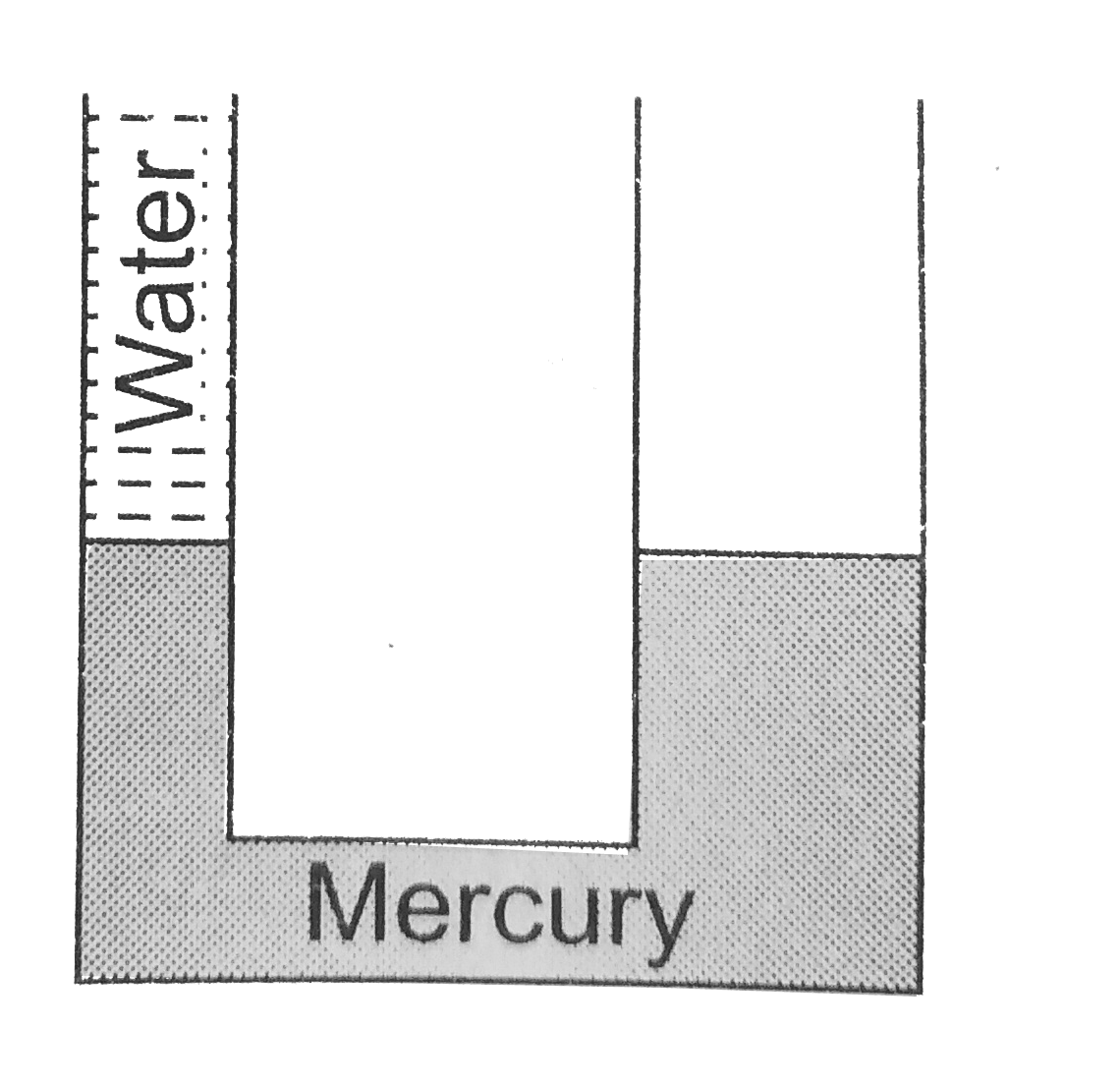At room temperature mercury has a density of 13.6 g/cc while liquid bromoform (CHBr3) has a density of 3.02 g cc. How high a column of bromoform will be supported by a pressure that supports a column of mercury 200 mm high?
98.67 cm
40.99 cm
90.07 cm
100 cm
The correct Answer is:C
To solve the problem, we need to compare the pressures exerted by two different liquids: mercury and bromoform. The pressure exerted by a liquid column can be calculated using the formula:
P=ρgh
where:
- P is the pressure,
- ρ is the density of the liquid,
- g is the acceleration due to gravity (which remains constant for both liquids),
- h is the height of the liquid column.
1. Identify the Variables:
- For mercury (Hg):
- Density ρ1=13.6g/cm3
- Height h1=200mm=20cm (conversion from mm to cm)
- For bromoform (CHBr₃):
- Density ρ2=3.02g/cm3
- Height h2 is what we need to find.
2. Set Up the Pressure Equations:
Since the pressures exerted by both columns are equal, we can set up the equation:
ρ1gh1=ρ2gh2
3. Cancel Out the Common Terms:
The acceleration due to gravity g appears on both sides of the equation, so we can cancel it out:
ρ1h1=ρ2h2
4. Rearrange to Solve for h2:
We can rearrange the equation to solve for h2:
h2=ρ1h1ρ2
5. Substitute the Known Values:
Substitute the values for ρ1, h1, and ρ2:
h2=13.6g/cm3×20cm3.02g/cm3
6. Calculate h2:
Perform the calculation:
h2=272g/cm23.02g/cm3≈90.07cm
Final Result:
The height of the bromoform column that will be supported by the same pressure as a 200 mm column of mercury is approximately 90.07 cm.
---
- P is the pressure,
- ρ is the density of the liquid,
- g is the acceleration due to gravity (which remains constant for both liquids),
- h is the height of the liquid column.
- For mercury (Hg):
- Density ρ1=13.6g/cm3
- Height h1=200mm=20cm (conversion from mm to cm)
- For bromoform (CHBr₃):
- Density ρ2=3.02g/cm3
- Height h2 is what we need to find.
Since the pressures exerted by both columns are equal, we can set up the equation:
ρ1gh1=ρ2gh2
The acceleration due to gravity g appears on both sides of the equation, so we can cancel it out:
ρ1h1=ρ2h2
We can rearrange the equation to solve for h2:
h2=ρ1h1ρ2
Substitute the values for ρ1, h1, and ρ2:
h2=13.6g/cm3×20cm3.02g/cm3
Perform the calculation:
h2=272g/cm23.02g/cm3≈90.07cm
The height of the bromoform column that will be supported by the same pressure as a 200 mm column of mercury is approximately 90.07 cm.
Topper's Solved these Questions
- STATES OF MATTERBook:VMC MODULES ENGLISHChapter:STATES OF MATTERExercise:IMPECCABLE
Explore 50 Videos
- STATES OF MATTERBook:VMC MODULES ENGLISHChapter:STATES OF MATTERExercise:ENABLE
Explore 50 Videos
- SOME BASIC CONCEPTS OF CHEMISTRYBook:VMC MODULES ENGLISHChapter:SOME BASIC CONCEPTS OF CHEMISTRYExercise:IN - CHAPTER EXERCISE - H
Explore 8 Videos
- STATES OF MATTERBook:VMC MODULES ENGLISHChapter:STATES OF MATTERExercise:IN-CHAPTER EXERCISE-I
Explore 10 Videos
Similar Questions
Iron has a density of 7.8g/cm3 and mercury has a density of 13.5g/cm3 What happens if an iron nail is put in mercury? Why?
View SolutionA U-tube in which the cross-sectional area of the limb on the left is one-third of the limb on the right contains mercury (density 13.6g/cm3). The level of mercury in the narrow limb extends to a distance of 30cm from the upper end of the tube. What will be the rise in the level of mercury in the right limb, if the left limb is filled to the top with water (neglect surface tension effects)?

View Solution
Knowledge Check
Torricelli's barometer used mercury but pascal duplicated it using French wine of density 984kgm−3 . In that case, the height of the wine column for normal atmospheric pressure is
(Take the density of mercury =1.36×103kgm−3)A5.5 mB10.5 mC9.8 mD15 m
A U -tube in which the cross - sectional area of the limb on the left is one quarter, the limb on the right contains mercury (density13.6g/cm3). The level of mercury in the narrow limb is at a distance of 36 cm from the upper end of the tube. What will be the rise in the level of mercury in the right limb if the left limb is filled to the top with water ?

View SolutionCalculate the height of a water column which will exert on its base the same pressure as the 70 cm column of mercury. Density of mercury is 13.6g cm−3
View SolutionA gas is enclosed in a room. The temperature, pressure, density and the number of moles respectively are t∘C,p atm, d g cm−3 and n moles.
What will be the pressure, temperature, density and number of moles in each compartment if the room is partitioned into four equal compartments ?
View SolutionWater rises to a height of 10cm in a capillary tube and mercury falls to a depth of 3.42cm in the same capillary tube. If the density of mercury is 13.6g/c.c. and the angles of contact for mercury and for water are 135∘ and 0∘, respectively, the ratio of surface tension for water and mercury is
View SolutionA manometer tube contains mercury of density 13.6×103 kg m−3. What difference in the levels of mercury in the two arms is indicated by a gauge pressure of 1.03×105Pa?
View SolutionA simple U tube contains mercury to the same level in both of its arms. If water is poured to a height of 13.6 cm in one arm, how much will be the rise in mercury level in the other arm ?
Given : density of mercury = 13.6×103kg m−3 and density of water = 103kg m−3.
View SolutionTorricelli's barometer used mercury. Pascal duplicated it using French wine of density 984kgm−3. Determine the height of the wine column for normal atmospheric pressure.
View Solution
